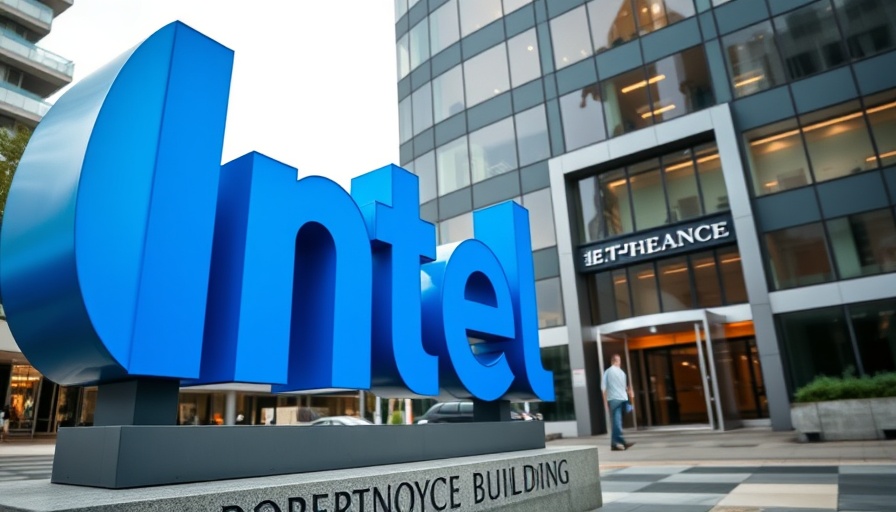
Understanding the Trump-Intel Deal: What It Means for the Tech Industry
The recent decision by the U.S. government to invest $8.9 billion into Intel, resulting in a 9.9 percent equity stake, has sparked significant interest and debate across various sectors. Announced by President Trump during a press conference, this deal is intended to bolster the struggling chip manufacturer while aiming to reduce the nation's reliance on foreign technology, particularly that from China.
Historical Context: Why This Investment Matters
The timing of this investment reflects an escalating competition in the global semiconductor market, where countries like China have positioned themselves as formidable players. Following the enactment of the 2022 CHIPS Act, which provides significant funding for semiconductor manufacturing, this partnership aims to revitalize not just Intel but the entire American chip-making ecosystem.
Historically, similar U.S. government investments post-2008 financial crisis were aimed at restoring stability in industries that were deemed too big to fail. Yet, many experts express skepticism about the motives behind this deal, highlighting that unlike those past interventions, Intel’s situation is not a crisis but rather a strategic opportunity for the U.S. economy.
Financial Implications: The Nature of the Deal
Critics have raised concerns about the nature of the equity stake acquired by the government. Unlike preferred stock—which could yield dividends and ensure a return on investment—the common stock could limit potential taxpayer benefits. This raises questions about the effectiveness of public-private partnerships and what taxpayers might realistically gain from this arrangement.
“If the government wanted a solid return, preferred shares would have made far more sense,” notes Brian Quinn, a law professor who emphasizes fiscal responsibility in government dealings. Understanding these nuances is vital for stakeholders analyzing the broader economic impacts of this investment.
Future Predictions: What’s Next for Intel and U.S. Tech?
With this substantial investment, expectations are high not only for Intel’s performance but also for its impact on the U.S. technology landscape. Experts suggest that this move may signal a shift in how the government supports American industries, particularly those critical to national security and technological advancement. The government’s leverage might create opportunities for Intel to secure more federal contracts, ultimately aiming to regain a competitive edge against foreign rivals.
Counterarguments: Diverse Perspectives on Government Intervention
While some view this as a strategic investment, others are cautious. Timothy Meyer, a business law expert, points out that such government actions can lead to complications, with potential repercussions in the broader tech industry. These concerns highlight an essential debate about the role of government in private business operations and the possible risks that arise from such interventions.
Takeaway: Understanding the Broader Impact
The Trump-Intel deal is more than just a financial transaction; it represents a critical juncture for the American tech industry. For tech enthusiasts, business owners, and policymakers, understanding the implications of this investment is vital as it could shape future regulations and initiatives aimed at enhancing the nation’s technological capabilities. As this story unfolds, it will be crucial to monitor both Intel's progress amid this investment and the government's evolving role in private-sector growth.
In conclusion, keeping an eye on the developments from this deal could offer valuable insights into how federal investments might redefine American industry's landscape in the years to come.
 Add Row
Add Row  Add
Add 




Write A Comment